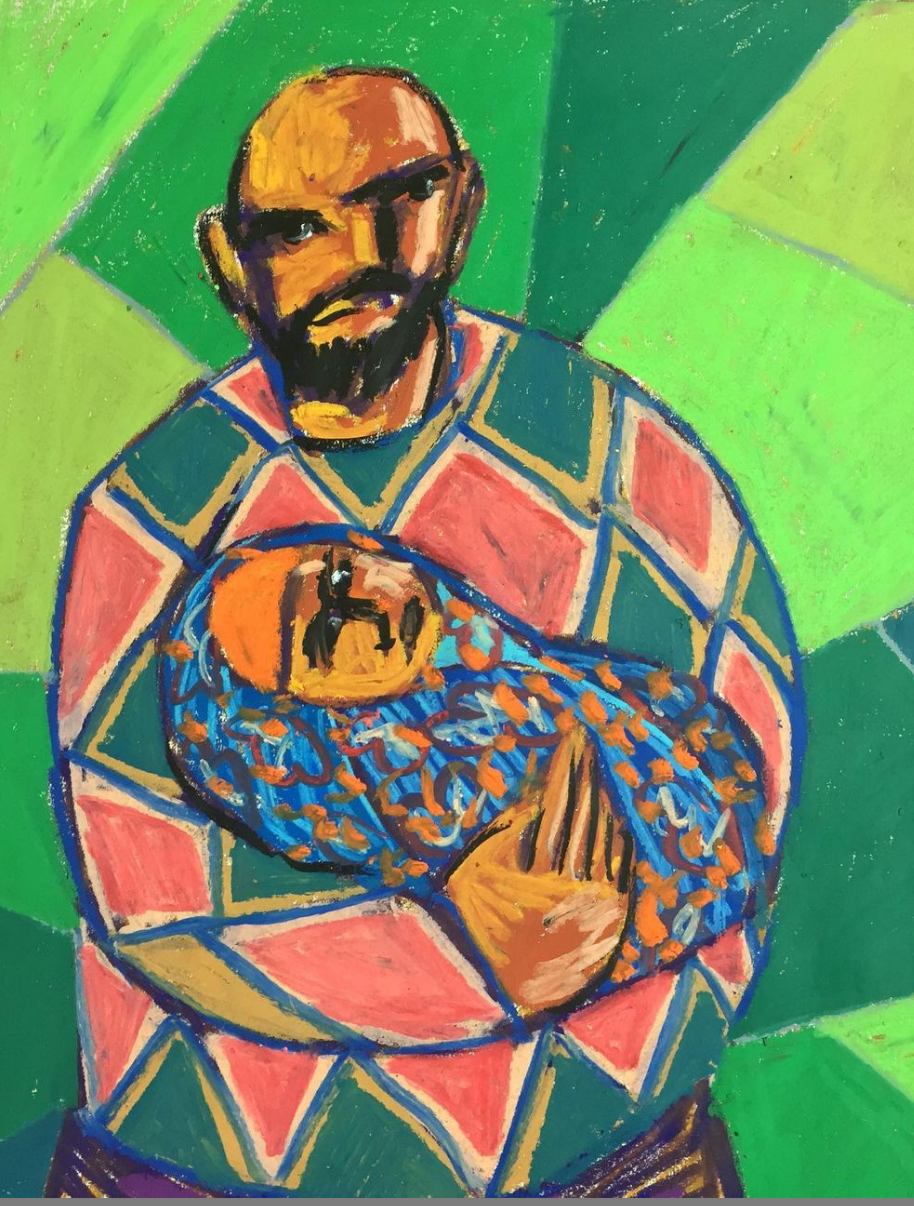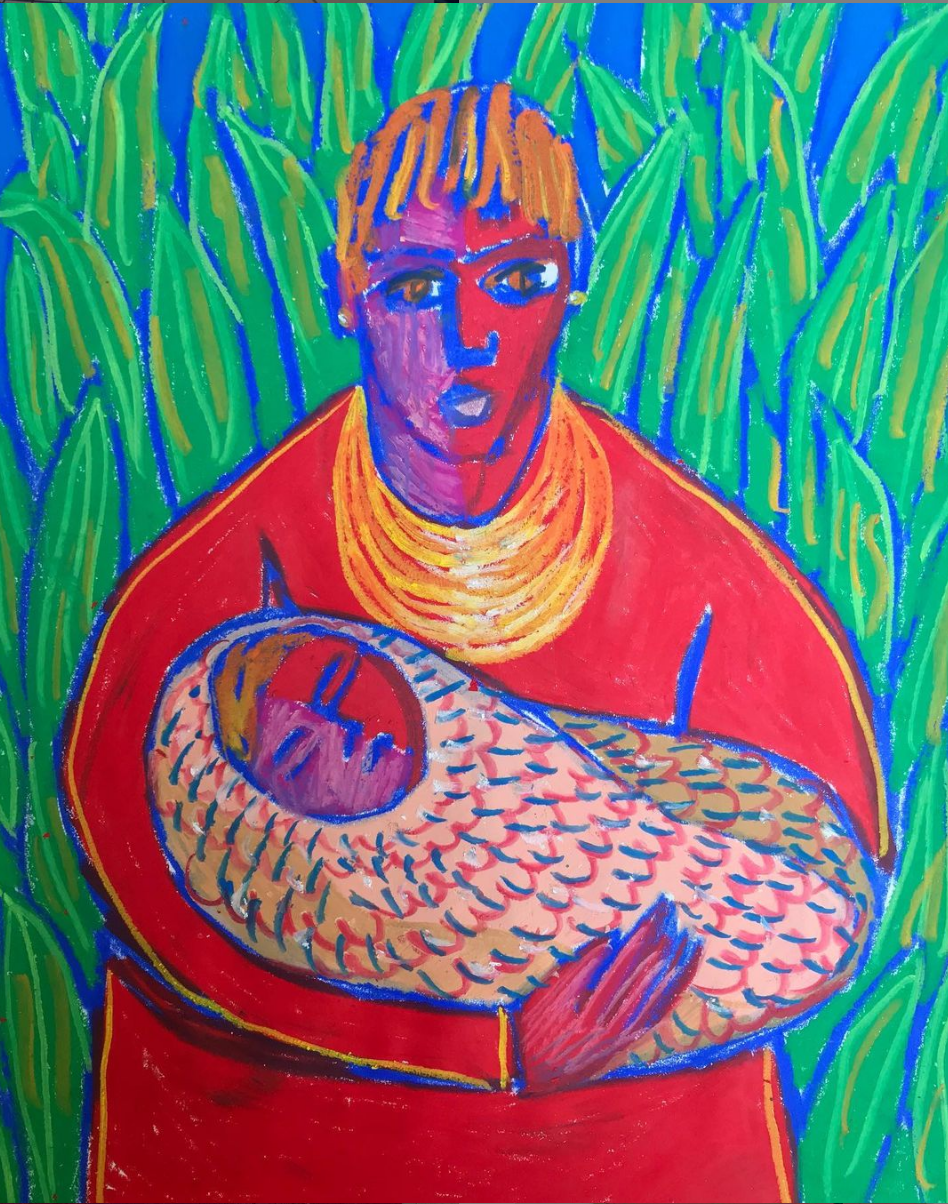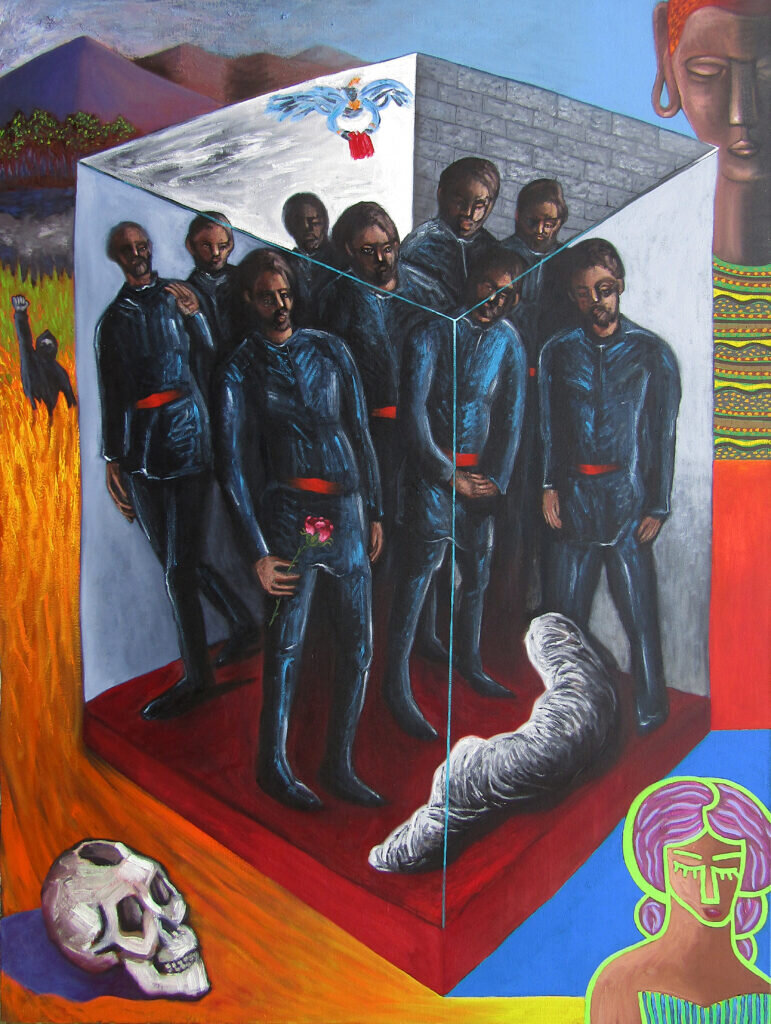Renzo Ortega
Illustration by JC Duron
Renzo Ortega is a Triangle artist whose work ranges from painting to performance, from Peru to the US.
How much of Peru is contained in your current works?
I am from Lima, yes, and it is a complex city that doesn't represent all of what Perú is, of course. I have been living almost half of my life in the United States. I left Perú in 2000 and lived in New York for 16 years while I began studying painting. Peru is part of who I am, and I am Peruvian wherever I am going, but my work is not about a faraway-nostalgic-exotic representation of my country of origin.
I also want to mention that anytime I say I am an artist from Perú, some people think that I do Inca art, or ask me about Ayahuasca, or some people think that my family lives close to "the pyramids" of Macchu Picchu. There is too much tokenism. I am interested in other topics like syncretism, decolonization, cultural exchange, immigrant contributions, and the intrinsic heritage that every one of us carries as invisible luggage anywhere we relocate.
And so it is more important for me to create a shared space of alliance rather than simply showcase the flag of national identity.
How does your experience in NC compare to your start?
I can not talk much about my experience in Lima, because I didn't work much professionally there. Still, I do want to focus on the incredible experiences I’ve had working with art institutions in the Triangle. I feel thankful for all the opportunities I have and have had here in North Carolina.
The most significant difference would be that there are more opportunities for me here in the United States than in Peru; here there is better distribution of resources. I noticed that there are efforts to make things better in all these inclusion and equality conversations. We all want art to be accessible. All institutions have to deal with low and cut budgets, politics, close-minded board members, etc. In the arts industry, not too many people figured out how lucky and privileged we are.
Here is where the closer community plays a crucial role in supporting artists at exhibitions and even social media during these pandemic times.
What inspires you to paint men together with a baby?
I do not paint men together with babies; I paint fathers with their children. That is an entirely different thing.
I joined a "Stay at Home Dads” group and attend a couple of their meetings with the kids at the parks. Amazing. In the conversations, you hear a lot about those feelings of inadequacy and the normalized strong dad narrative- one who works a lot, or is even mostly absent.
I am adopted. When I am at the park and look at my kid playing, I'm thinking a lot about my biological dad- how he, for years, looked at me from afar but could not enjoy me or hug me as his child. Our separation was not his fault, but maybe a desperate move that saved my life. I do not blame him for not being able to be there. Perhaps he didn't have another option. We didn't have a chance to say too much to each other, or that everything will be ok.
For these reasons, I’m working on a series of a hundred oil pastel drawings of a dad with their child. It’s a celebration of fatherhood and a memorial to my biological and my adoptive family.
How do you know when a set of works is complete?
In pictorial terms, never.
Always, there is something that you can incorporate or remove from a painting. When I moved to North Carolina in 2016, the first things I did was unwrap a painting that had been in storage since 2001.
I kept working on that painting. Now, that painting is in storage again. Fantastic! It often happens that painters like me go back and forth, a never-ending process; I think that is painting.
However, in official terms, a set of my work is complete when exhibited to the public.
How can we buy your art?
Love Songs
Very simple: by starting a conversation. Please contact me! The best art acquisitions are the ones that involve a conversation.













